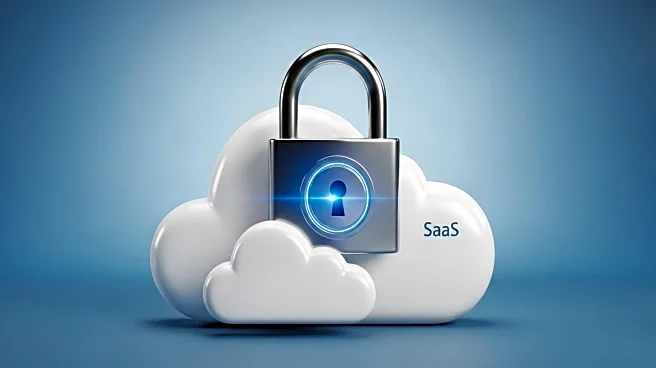What's Happening?
The Cloud Security Alliance (CSA) has launched the SaaS Security Capability Framework (SSCF) to address the complexity of securing Software as a Service (SaaS) applications. The SSCF aims to standardize customer-facing security controls within SaaS platforms, helping customers fulfill their security responsibilities under the shared security responsibility model. This model requires providers to secure the cloud infrastructure while customers manage their data and access configurations. The SSCF defines six primary security domains, each with specific controls, such as blocking malicious uploads and ensuring user access visibility. The framework encourages SaaS providers to implement these controls, offering customers a standardized approach to security management.
Why It's Important?
The introduction of the SSCF is significant as it addresses a critical gap in SaaS security by establishing industry standards for customer-facing controls. This framework is expected to reduce the complexity and risk associated with managing multiple SaaS applications, which often have varied security settings. By standardizing these controls, the SSCF enhances trust and efficiency within the SaaS ecosystem, benefiting both providers and customers. Providers can offer compliant options that meet enterprise security requirements, while customers can focus on service quality without worrying about implementation details. This initiative is poised to improve overall SaaS security and foster better compliance with security practices.
What's Next?
The adoption of the SSCF by SaaS providers is likely to become a competitive advantage, as customers will prefer compliant options that simplify security management. As the framework gains traction, it may lead to broader industry adoption and potentially influence regulatory standards for SaaS security. Providers will need to invest in implementing these controls, but the long-term benefits of reduced complexity and enhanced security could outweigh the initial costs. The CSA's initiative may also prompt further collaboration between SaaS providers and enterprise customers to refine and expand the framework's capabilities.
Beyond the Headlines
The SSCF's introduction highlights the evolving landscape of cloud security, where traditional security models are being adapted to meet the unique challenges of SaaS environments. This shift underscores the importance of collaboration between industry stakeholders to develop practical solutions that address compliance and security needs. The framework's focus on customer-facing controls reflects a growing recognition of the shared responsibility in cloud security, emphasizing the need for clear and actionable security practices that can be effectively implemented by organizations.










